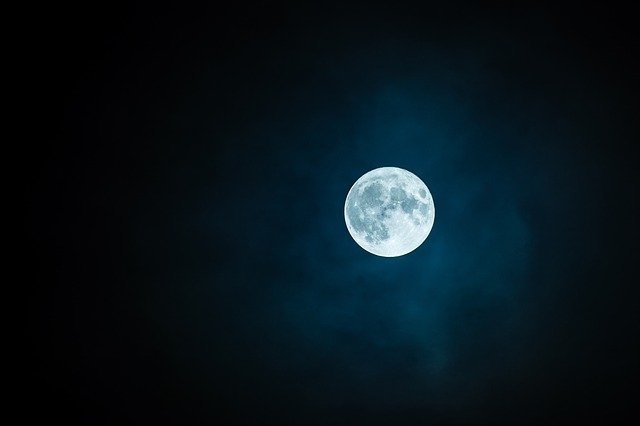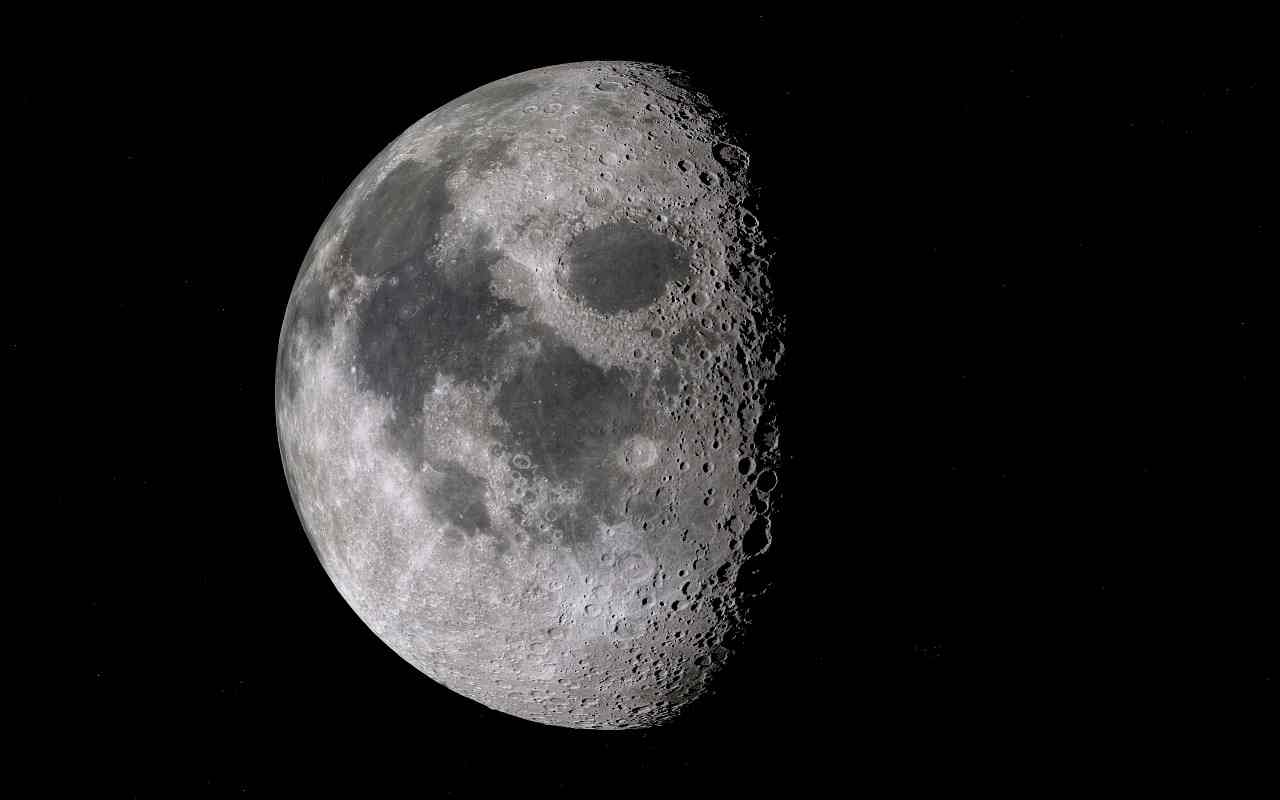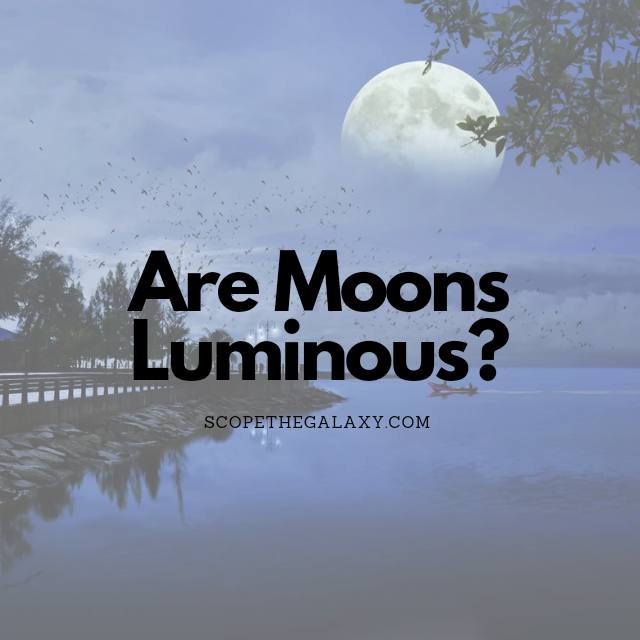*This post may contain affiliate links. This means we may make a commission if you purchase an item using one of our links*
A moon is an object that orbits one of the planets in our solar system. These objects – also called natural satellites – appear to glow in the night sky but don’t produce any light of their own. Instead, they reflect a small percentage of the radiation from the Sun, which gives them a glowing appearance.
Discover whether or not the Moon is luminous and if it possesses the ability to create its own light. And learn about the composition of moon rock, plus whether it glows.
Why Is The Moon Luminous?
Table of Contents

The Moon is non-luminous because it doesn’t create its own light. Instead, it shines by reflecting light from the Sun. Some objects are naturally luminous, while others can be made to emit light. The natural light sources are the Sun and other heavenly bodies like stars.
Luminescence is the process by which some materials can be made to emit light. There are many types of luminescence, including fluorescence and phosphorescence.
Fluorescent materials absorb some kind of energy, usually ultraviolet (UV) or visible light, and then re-emit this energy as a different wavelength of light, such as green or blue. Phosphorescent materials absorb energy from outside sources such as sunlight or UV lamps and then slowly release it over time in the form of visible light.
The Moon is not a luminous object because it does not emit any light of its own; it simply reflects the light from the Sun. Still, luminous is often applied vaguely to mean any object that gives off light, which is not strictly true.
The Sun, for example, is an incandescent object that emits visible light when heated. Most light-producing objects in our world become luminous because they have energy from the Sun. Still, luminescence is a term referring to light emissions produced by a method other than heat.
Is The Moon Reflective Or Luminous?
Reflective objects are those that visibly reflect light. The light from the Sun or other sources bounces off these objects and then reflects into our eyes. Reflective objects reflect the Sun’s rays, while luminous ones give off their own light without needing any external source of illumination. The Moon is reflective because it does not emit its own light; instead, it reflects the light from our Sun.
But how does a huge rock reflect light? We often think that objects such as mirrors are the only reflective materials, but every material has a reflexivity level. Scientists use the term “albedo” to describe a space object’s reflectivity – specifically, how much Sun radiation that object reflects.
The dust on the surface of the Moon makes it so that light is scattered in all different directions. This means that some parts of the Moon are brighter than others – this is how we see all those craters and other features on its surface. The light is reflected from old lava flows, craters, and volcanoes.
The Moon has an albedo of 0.12, reflecting just 12% of the radiation it absorbs from the Sun. An albedo of 0 means that an object is dark, while a score of 1 indicates the object’s lightness. The Moon may seem bright from our position here on Earth, but it is pretty dim in comparison to some of the other moons within our Solar System.
For example, Saturn’s moon Enceladus has an albedo of 0.99 thanks to its highly reflective surface of ice and snow. In contrast, some of the darkest objects in the Milky Way, such as asteroids, have an albedo of just 0.06.
The Moon’s brightness alerts as it moves through different phases. In the first and last quarter, the Moon has 50% illumination from the Sun, but its brightness is only around 8% compared to a full moon. This is because sunlight hitting a full moon bounces straight back at us, but light hitting the Moon when it’s on an angle will deflect away from us.
Does The Moon Create Its Own Light?
We know that the primary source of the Moon’s luminescence comes from it reflecting the Sun’s radiation. Still, could the Moon create some light of its own? Science says yes.
The Moon’s surface has no atmosphere to protect it, leaving it exposed to the Sun’s visible radiation plus high-energy UV and X radiation. In addition, the surface of this rocky satellite is exposed to corpuscular radiation composed of charged particles from solar winds. These particles cause the ejection of electrons from atoms within the Moon’s surface material. And this leads to X-ray emission.
These X-rays are usually emitted at wavelengths of 10 to 100-angstrom units. These released electrons come from the innermost orbit of the molecule. If they return to the center in one transition, they create an X-ray photon, but if they return in stages, they can create photons with longer wavelengths, which include light photons.
In this way, it’s possible that the Moon could create some of its own luminescence, but this is not a widely published theory.
Does Moon Rock Glow?

“Moon rock” is any rock that comes from Earth’s Moon, including samples collected from human exploration and rock ejected to Earth in the form of meteorites. Almost every rock on the Moon’s surface is igneous (compared to the prevalence of sedimentary rocks on Earth), which formed during the cooling of lava.
The two most common kinds of moon rock are basalt and anorthosite; the basalts are rich in iron and titanium and found in the maria. Meanwhile, the anorthosites are rich in aluminum, silicon, and calcium and located in the highlands.
Moon rocks tend to be gray in hue and carry no particular properties that would make them glow. That said, they can reflect light if the source is strong enough, so they could appear to glow in some instances.
Summary
The Moon may appear bright in the night sky, but it is actually an extremely dim object with an albedo rating of just 0.12 (Earth’s albedo is around 0.30). Its glow comes from the vast energy generated by the Sun, of which our Moon reflects just a small portion. Still, the lack of atmosphere and solar winds mean that this satellite could generate a small amount of light.
References
https://www.universetoday.com/19981/moon-albedo/#:~:text=The albedo of the Moon,Sun’s radiation an object r
Luminescence, fluorescence, and phosphorescence – Explain that Stuff
Forms of Luminescence – NIGHTSEA
Moon – Lunar rocks and soil | Britannica

